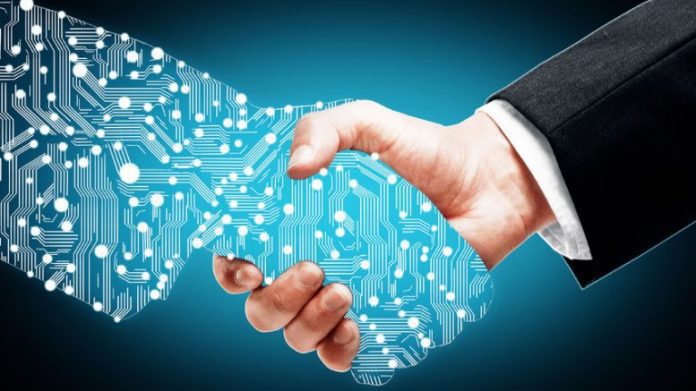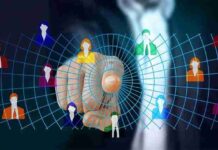It is said,“Stellar talent has led to stellar success”. An organization success is defined by its culture and the unique way it attracts, and manages stellar employees. What we are seeing over the last couple of years is that digitization of employee benefits is making it easy for organizations to identify them and devise ways of passing on the employee benefits.
To retain key employees, many organzations are moving towards providing them non-monetary benefits apart from the regular salary package. And these non-monetary benefits nowadays include providing them with discount coupons to healthcare welfare schemes to child-care provision, corporate gym membership, health club discounts, a few years sabbatical for some key employees, and so on and on.
Managing these benefits could be cumbersome when organizations have huge number of employees. Therefore companies have to resort technological solutions like web and mobile applications. Some key benefits that they provide are, better efficiency, ease of communication, help in being compliant to norms and standards, better in managing risks and improved productivity. These benefits are provided by running data analytics on these provisions to see how employees are using them and in order to devise ways to improve the offerings.
Still many organizations in India are far behind in terms of digitization of employee benefit systems. It’s the time these companies realize the potential of their employees as important assets, and tailor their existing systems in ways to create better experiences for them.
INCORPORATING DIGITIZATION
 Digitization de-centralizes HR activities to users and embeds them in the business. Thus far, this was being done through, Big Data, Analytics, Social Network and Mobile solutions. The last couple of years have seen a new paradigm emerge. There is an increasing bias towards AI (Artificial Intelligence), ML (Machine Learning), DL (Deep Learning) and VR (Virtual Reality) and AR (Augmented Reality).
Digitization de-centralizes HR activities to users and embeds them in the business. Thus far, this was being done through, Big Data, Analytics, Social Network and Mobile solutions. The last couple of years have seen a new paradigm emerge. There is an increasing bias towards AI (Artificial Intelligence), ML (Machine Learning), DL (Deep Learning) and VR (Virtual Reality) and AR (Augmented Reality).
Learning) and VR (Virtual Reality) and AR (Augmented Reality).
Though machine learning techniques have long been part of our every day lives, like searching for something using Google, or buying in Amazon, we have been using AI (Artificial Intelligence) all the time. It is a software algorithm executing tasks otherwise done by humans. It is able to autonomously produce critical decisions and predictive insights, thereby increasing and organization’s’ operational efficiency.
Some of the areas where employees can benefit from digitization is:
- Compensation related benefits
- Educational programs for self-development
- Incentives and Benefit Management
- Managing shares and stocks
- Convenient round-the-clock access to their benefit programs
Companies like IBM and Four Seasons use tools such as “Workday” which employees can access even when they are on the road. Workday is also customizable to specific requirements. Workday can also be accessed by iPhones, Ipad’s and desktops, and there is seamless integration with other business applications.
SAAS (SOFTWARE AS A SERVICE)
BT (British Telecom) uses SaaS (Software As A Service), a cloud based technology solution to digitize their offerings. Employees will be able to access their data even when they are travelling or away from office.
DESIGN THINKING
 Today many organizations are applying design thinking to improve employee experience. You may wonder what is design thinking. In short, it is a method used to solve complex problems and find desirable solutions. It is a human-centric and iterative process consisting of 5 steps. Empathize, define, ideate, prototype and test. Thus far many IT companies have been using it to analyzing customer behavior to provide better outcomes. When designing your employee benefits process, it helps you to see your employees journey from getting hired to leaving an organization. You can leverage design thinking when doing analytics in which data analysis and design thinking can be linked to recommend better solutions directly to employees. Human centered design enhances the user experience at every touch point, and fuels the creation of benefit products and services that deeply resonate with your employees.
Today many organizations are applying design thinking to improve employee experience. You may wonder what is design thinking. In short, it is a method used to solve complex problems and find desirable solutions. It is a human-centric and iterative process consisting of 5 steps. Empathize, define, ideate, prototype and test. Thus far many IT companies have been using it to analyzing customer behavior to provide better outcomes. When designing your employee benefits process, it helps you to see your employees journey from getting hired to leaving an organization. You can leverage design thinking when doing analytics in which data analysis and design thinking can be linked to recommend better solutions directly to employees. Human centered design enhances the user experience at every touch point, and fuels the creation of benefit products and services that deeply resonate with your employees.
VR (VIRTUAL REALITY) AND AR (AUGMENTED REALITY)
Remember the game Pokemon Go which became a global phenomenon in late 2016, where almost everyone, adults and children where hooked up with this game that was played on their mobile phones? You would also remember about Google glasses that came out in 2013. Though they have been around for some time, the world of business have started piloting this technology to develop and retain talent in their organizations. When designing a benefits system, you can use AR to help your employees to take a sneak peek into their future with the company.
VR is one of the most intriguing technological trends that has great potential for the uses. It provides a virtual tour of your benefits processes to your employees. You can use this to help uses to navigate through on how to use the employee benefits management systems and guide them through a virtual world. In olden days we used to have the online Help system and HR user manuals for this purpose.
At its heart AR and VR are entirely about improving user experience.
SMAC (SOCIAL-MOBILE-ANALYTICS-CLOUD)
Jack Welch once said, “In God we trust, rest all please bring data”. Many organizations adopt a formal BYOD (Bring Your Own Device) policy. In such situations data privacy and security become primary concern.
SMAC is a confluence of four technologies that creates an eco-system allowing the HR function in improving its operation and get closer to its employees.
Organizations are now increasingly using social networking sites such as Twitter, Facebook, Instagram and LinkedIn to engage with its employees. These platforms are used to share ideas and chat with employee, and also to clarify queries and receiving complaints. According to latest research, with over 69% companies using web-based or mobile HR platforms, it is an important consideration to use this platform prudently and securely to engage with your employees.
MACHINE LEARNING (ML) AND ARTIFICIAL INTELLIGENCE (AI)
Machine learning is an application of artificial intelligence (AI) that provides systems the ability to automatically learn and improve from experience without being explicitly programmed.
An example is IBM’s Watson. Watson is an IBM supercomputer that combines artificial intelligence (AI) and sophisticated analytical software for optimal performance as a “question answering” machine. The supercomputer is named after IBM’s founder, Thomas J. Watson.
Watson consists of a huge database which is a collection of varied data, and provides text search and responds in voice with the message. It remembers the data it have collected from varied sources and learns from it to provide answers.
Combining Machine Language with Artificial Intelligence an app that is being used by an employee, leverages visual recognition and Augmented Reality (AR) to resolve issues, diagnose problems, and troubleshoot. HR can leverage its usefulness when designing benefit systems that can be used real time, generate insights real-time, and provide timely solutions to employee’s concerns.
CONCLUSION
The digital enterprise and digital HR are a revolutionary leap forward, not an incremental step. HR’s digital transformation of their benefit management system begins with a change of mind-set within the HR organization, real-time operations, platforms, automation, and mobile-first, focusing on the employee and HR experience as part of a larger digital challenge. This will go a long way in employee engagement and retention of key employees. It all starts at the top leadership’s commitment, support and belief in the utilization and realization of benefits to the organization.
 Author- Vasanthan Philip is a Certified Executive and Leadership Coach from Marshall Goldsmith and John Mattone University. He is an advisor, consultant, trainer and coach with over 30 years of industry experience. Recently he was selected to be leadership coach for IBM in Singapore. He is a avid blogger, publishes regularly in LinkedIn and is currently writing a book on “What it takes to be a great leader”. He participates and speaks in conferences on Agile and Business Agility. He has worked in leadership positions with IBM, HCL, Wipro and FIS. He regularly facilitates workshop on Leadership Development, Change Management and Business Agility.
Author- Vasanthan Philip is a Certified Executive and Leadership Coach from Marshall Goldsmith and John Mattone University. He is an advisor, consultant, trainer and coach with over 30 years of industry experience. Recently he was selected to be leadership coach for IBM in Singapore. He is a avid blogger, publishes regularly in LinkedIn and is currently writing a book on “What it takes to be a great leader”. He participates and speaks in conferences on Agile and Business Agility. He has worked in leadership positions with IBM, HCL, Wipro and FIS. He regularly facilitates workshop on Leadership Development, Change Management and Business Agility.









